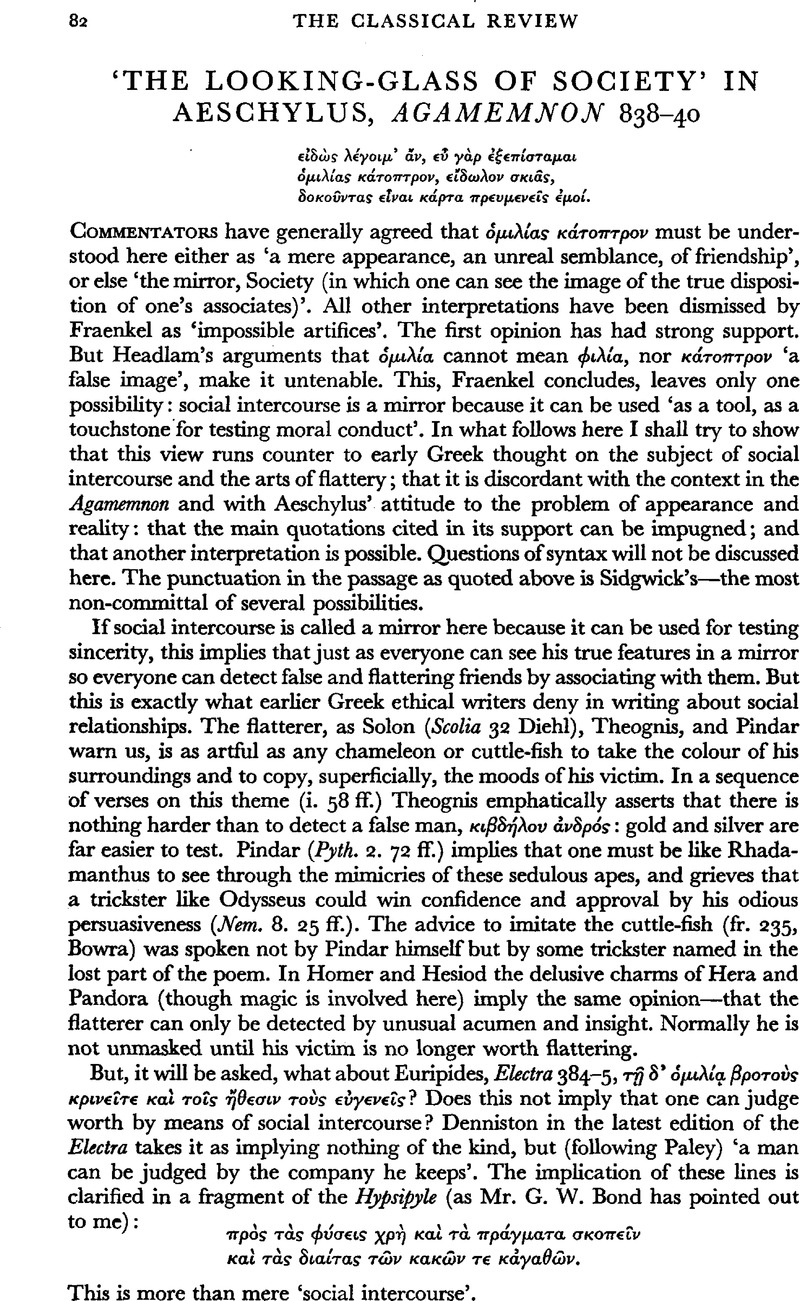No CrossRef data available.
Published online by Cambridge University Press: 13 February 2009

page 83 note 1 As I have suggested in Aeschylus in His Style (Dublin, 1942) Aeschylus' use of φ'ιδρωπός with reference to the cub here may be a deliberate echo of Solon's φαιδρῷ σεποσεννἑπῃ in Scolia 32.
page 84 note 1 I cannot accept Fraenkel's portrait of the good and admirable Agamemnon, and find F. R. Earp's judgement in Greece and Rome xix (June 1950) more convincing. Behind an imposing façade Earp finds self-absorption, moral insensitiveness, and some stupidity.
page 85 note 1 Cf. Plutarch, On brotherly love 479 c ![]() Cf. Shakespeare on the ‘glasse’ of pride in T. and C. m. iii. 52 ff.
Cf. Shakespeare on the ‘glasse’ of pride in T. and C. m. iii. 52 ff.
page 85 note 2 In the fragments of the Ὄπλων κρίσιδ, Palamedes, and Philoctetes: cf. ‘The Denigration of Odysseus’ in Hermathena, lxxiii–lxxiv (1949–50), especially pp. 37–38.1 now agree with the view of Garassino (Atene e Roma, x (1930), p. 221) in what follows here.